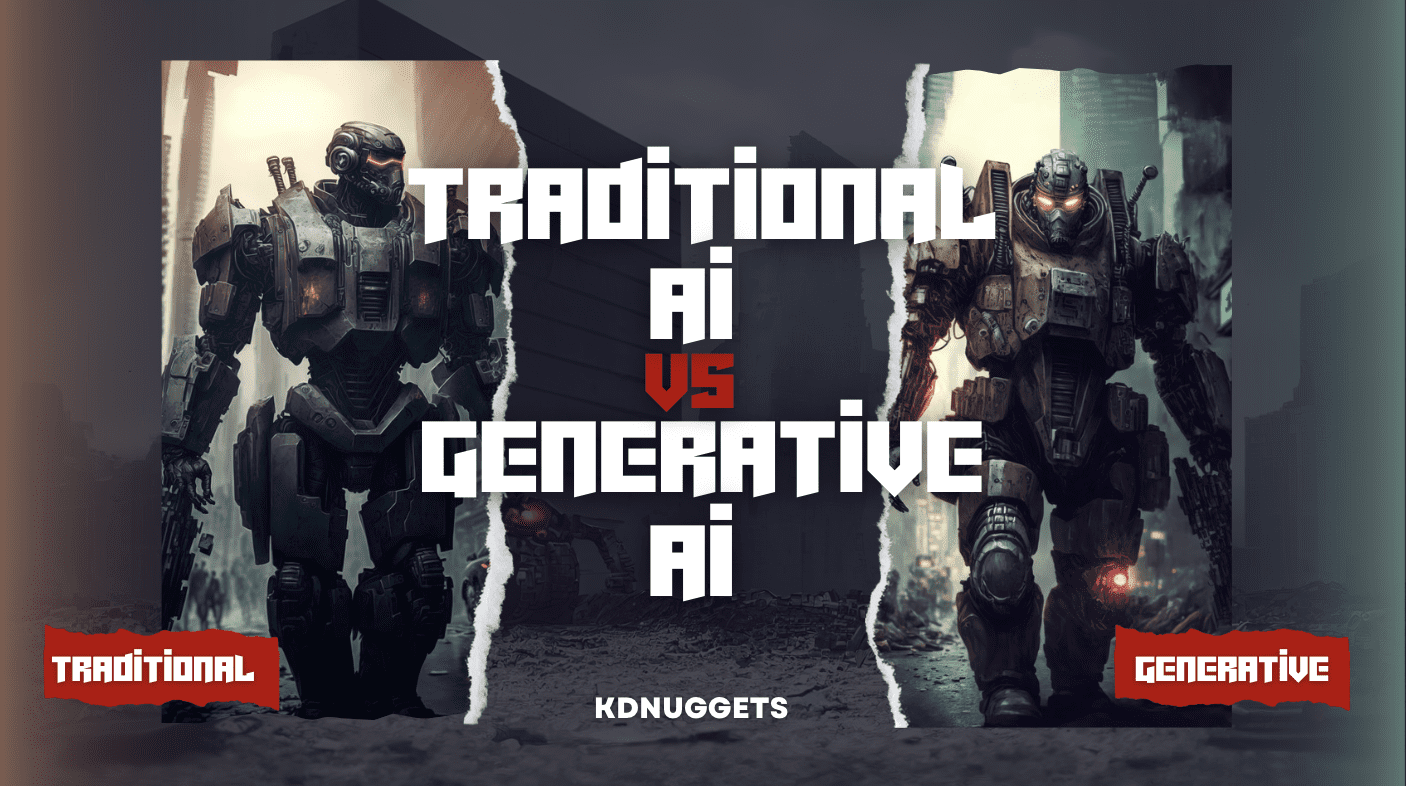
Image by Author
‘Generative AI’ is the next buzzword that’s going around at the moment. Regardless of what sector you’re working in, you’ve definitely heard the word. It has shown us in the past 6 months alone the significant advancements in artificial intelligence (AI). It has reshaped various industries, and everybody wants to get their hands on it.
For some of you, you may not really know the difference between the subsets of AI, and this is the point of this article.
To clear things up for you.
Traditional AI – a part of AI in which the majority of non-technically inclined people know. Also known as Narrow or Weak AI, the traditional form of AI focuses on performing a specific task in an intelligent manner.
So what we know of traditional AI are voice assistants such as Siri and Alexa who are designed to respond to an input and produce an output. The way in which this is doable is by these AI systems learning from data, characteristics, and more to make decisions and predictions.
Think about when you’re playing computer chess. The computer is not just making up rules as it goes, it knows all the rules and uses this to make its next move. It’s a pre-defined strategy.
Strategy. That is what traditional AI is based on. It makes its decisions using a specific set of rules that it falls back on each time.
It receives an input and produces an output – based on rules, not by creating rules.
Now, onto the buzzword ‘Generative AI’. As you can imagine, I have emphasised that Traditional AI is based on rules and cannot create something new. So, where does that leave Generative AI?
Yes, you’re right. Generative AI has the ability to create something new. Just like traditional AI, generative AI has learned a lot of data and is using this to make decisions and predictions. But rather than it being a simple input and output process.
Generative AI takes the input, understands it, and creates something new using the information from the input. It is trained on data and learns the underlying patterns to be able to generate new data based on the input information that is similar to the training data.
To date, you can use Generative AI to create outputs in different forms such as text, image, and music, as well as use it to help you with tasks such as code completion.
Examples of generative AI include GPT, Soundful, Synthesia, and DALL-E 2.
So, what’s the difference between traditional AI and generative AI?
The capabilities and applications are the main difference.
As I mentioned prior, traditional AI is based on receiving an input and producing an output. Input data is analysed and used to make decisions and predictions. If you’re looking for pattern recognition, traditional AI is your go-to. Traditional AI is still very popular and is used to power a lot of current AI systems, such as chatbots and predictive analytics. It focuses on task-specific applications, which a lot of people use for their day-to-day tasks.
On the other hand, generative AI will go above and beyond and create new data, which is similar to training data. If you’re looking for pattern creation, generative AI is your go-to. Generative AI is opening new doors for companies to be more creative and innovative. It can drastically reduce the amount of time spent on tasks such as the ideation process. It can write song lyrics, write articles, and create deepfakes. Where creation and innovation are important, generative AI has a high potential of taking it to the next level.
To wrap up this general article about traditional AI and generative AI, you need to understand that their functions cannot be intertwined just yet. For example, generative AI can be used with traditional AI to provide more effective solutions. On the other hand, traditional AI can provide a specific output that could be further analysed to create personalised content using generative AI.
Understanding the difference between the two and their specific role in the world of AI is important. They are both shaping our future and are both highly embraced in today’s society.
You know understand the unique capabilities of the two and will get to enjoy the ride as they continue to be innovative.
Nisha Arya is a Data Scientist, Freelance Technical Writer and Community Manager at KDnuggets. She is particularly interested in providing Data Science career advice or tutorials and theory based knowledge around Data Science. She also wishes to explore the different ways Artificial Intelligence is/can benefit the longevity of human life. A keen learner, seeking to broaden her tech knowledge and writing skills, whilst helping guide others.

